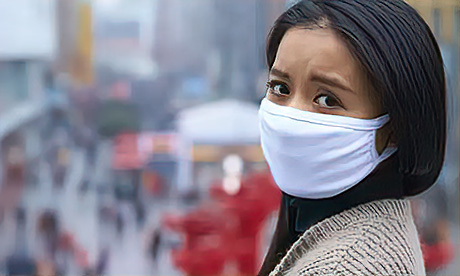Across the world, the omicron phase of the Covid-19 pandemic is now piling up towering case counts in places that have largely managed to keep the disease in check until this point.
This troubling rise may signal that another wave of Covid-19 is rising in countries just coming out of their own omicron shadows.
Hong Kong now reports the world’s highest death rate from the disease.
Hospitals are overwhelmed and the surge is fuelling a mental health crisis and leading to suicides, particularly among elderly residents.
Mainland China is also seeing major outbreaks in metropolises like Shenzhen and Shanghai, putting millions of people under lockdown and halting production in major international manufacturing centres.
These outbreaks are testing China’s stomach for its zero-Covid approach to the pandemic, a costly but effective approach where entire cities grind to a halt to control outbreaks.
In South Korea, once hailed as a pandemic success story, case counts have broken a new record with daily reported infections topping 600,000.
Australia and New Zealand, which had previously held cases to enviably low levels, have also seen new spikes in recent weeks. The list goes on: Singapore, Thailand, Vietnam.
Setting its own agenda
There are some common factors among these outbreaks.
The biggest one is that the virus itself has changed.
The mutations in the omicron variant of the virus that causes Covid-19, first detected in November 2021, make it the most contagious version of the virus known to date and allowed it to evade immunity — both from vaccines and from previous infections — better than other variants.
Many of the earlier omicron waves were caused by a sub-variant known as BA.1.
Another omicron sub-variant known as BA.2 is even more transmissible and is now driving a distinct spike in new cases.
However, there are also variables that make each of these outbreaks unique, namely how leaders in these regions deployed their public health strategies — testing, contact tracing, travel restrictions, vaccination — and when they relaxed them.
The good news is that most Covid-19 vaccines are just as protective against severe disease caused by BA.2 as they are against BA.1. And omicron causes a lower rate of hospitalisations and deaths among vaccinated people compared to other variants.
As the world enters the third year of the pandemic, these surges are a tough lesson about the perils of complacency.
But for countries watching from afar that may be on the cusp of another round of infections, the latest series of outbreaks abroad also offer policy lessons on the best ways to dampen Covid-19’s worst effects.
How Hong Kong ended up with the world’s highest death rate from Covid-19
Hong Kong, a dense city of 7.4 million people, saw daily new Covid-19 cases climb above 66,000 this month.
The per-capita death rate reached 37 per million residents and one fatality per 20 infections, very high compared to rates among developed countries.
It’s a stark shift from how well Hong Kong weathered much of the pandemic, building on its experience with other coronaviruses like the 2003 SARS outbreak.
Hong Kong has also maintained strict border controls.
Visitors face a 14-day quarantine requirement with location-tracking wristbands when they are allowed to enter the city at all. City health officials also maintained a robust contact tracing system.
That cases are surging now is partly a function of the recent emergence of BA.2, but also because governments are starting to relax.
As a result, Hong Kong went long stretches during the pandemic without any cases at all and with life largely continuing as normal.
“We had a period of about six months without a community outbreak of Covid in Hong Kong in the second half of 2021, but I think it was inevitable that an outbreak would occur sooner or later,” said Benjamin Cowling, chair of epidemiology at the University of Hong Kong’s public health school, in an email.
What’s changed now is that the BA.2 sub-variant, which is driving the current wave of infections, is very, very easy to contract.
Viruses like SARS-CoV-2, which causes Covid-19, are prone to mutation.
How severe the next Covid-19 wave will be also hinges on how much the public is willing to take precautions, and many people are already putting masking and social distancing behind them.
The more people they infect, the more likely it is that they will change, and some of those changes can make the virus more transmissible, cause more severe illness, or better evade the immune system. (A variant is a category of a virus with a distinct grouping of mutations. But if two strains of a virus have only a handful of differences between them, they may be classified as sub-variants like BA.1 and BA.2.)
BA.2’s reproductive number — how many other people each infected person goes on to infect on average — is around 10.
With stringent public health measures like social distancing, frequent testing, and quarantining, the reproductive number dropped to 2 or 3, “which is a very substantial reduction, but not enough to prevent an outbreak from occurring,” Cowling said.
As long as the virus’s reproductive number says above 1, it will continue to spread. But BA.2’s raging transmission also means that it quickly runs out of people to infect, leading to a sharp rise and rapid decline in cases. Continue reading
Additional reading
News category: Analysis and Comment.




